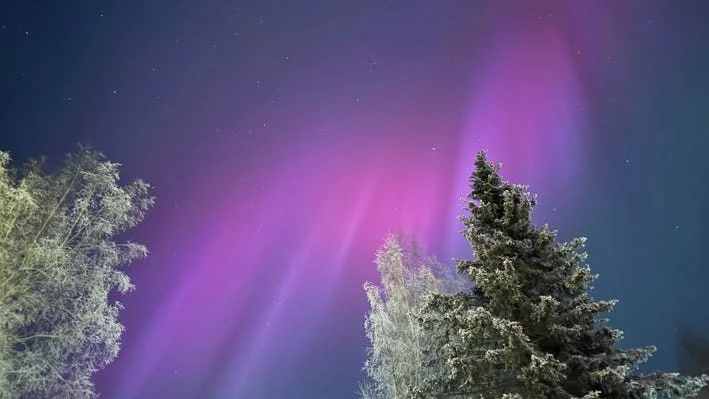
Northern Lights Delight: Aurora Borealis Poised to Paint the US Sky!
Get ready for a celestial spectacle! The Northern Lights, also known as the Aurora Borealis, are predicted to be visible across a significant portion of the northern United States. Thanks to increased solar activity and geomagnetic storms, a vibrant display could grace the night sky, offering a breathtaking experience for skywatchers.
According to the National Oceanic and Atmospheric Administration (NOAA), several states could witness this mesmerizing phenomenon. Initially, fifteen states were in the viewline for Sunday night, and favorable conditions persisted into Monday. This exciting forecast follows a slightly lower forecast from Saturday, when still ten states were put in the aurora's viewline.
Prime Viewing Locations:
The NOAA's forecast pinpointed specific locations where the aurora might appear. Keep an eye on the skies if you're in Alaska, North Dakota, Minnesota, most of Washington, South Dakota, Montana, Wisconsin, Michigan, or Maine. The northern reaches of Idaho, Wyoming, Iowa, New York, Vermont, and New Hampshire also stand a chance of catching a glimpse.
Understanding the Science Behind the Spectacle:
The aurora borealis is triggered by geomagnetic activity, where ions collide with atmospheric gases, creating the shimmering display of lights. NOAA's forecasts indicated possible G1, or minor, geomagnetic storms, further enhancing viewing prospects.
Adding to the excitement, this comes after the biggest solar flare of 2025 so far and just over a year after an extreme G5 geomagnetic storm on May 10-11, 2024, the strongest in twenty years.
Optimal Viewing Tips:
To maximize your chances of seeing the northern lights, venture to an unobstructed, north-facing location far from city lights and pollution. The aurora is typically most brilliant between 10 p.m. and 2 a.m. local time, when geomagnetic activity peaks.
Photographing the Aurora:
For aspiring astrophotographers, a wide-angle lens and tripod are recommended. Smartphone users can leverage night mode and slower shutter speeds to capture the lights' ethereal movements.
Solar Maximum and Space Weather:
We're currently experiencing a "solar maximum" in the sun's 11-year cycle, leading to more frequent solar flares, coronal mass ejections, and geomagnetic disturbances. Experts predict this elevated solar activity to continue into 2026, implying further opportunities for aurora sightings.
So now that you have the tips and tricks, will you be watching the skies this weekend? Share your experiences and observations in the comments below. Happy skywatching!